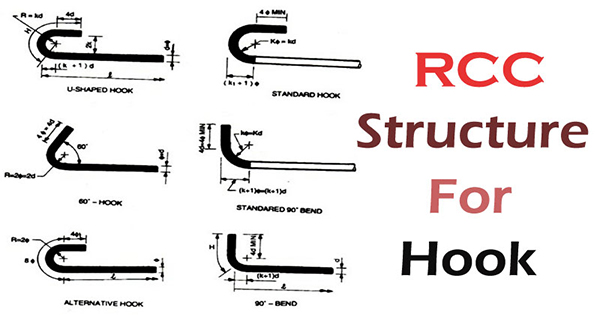Types of hooks in RCC Structures

In this construction video tutorial, you will gather knowledge on different types of hooks used in RCC structures.
Each project contains “hooked” reinforcing exposed in at least one detail. Several drawings relate to “standard hooks” and demonstrate hooked bars in particular areas for top and bottom reinforcing.
As per standard ACI 318-11, Section 7.1, there are three types like 90-degree hooks (those contain a 12-bar diameter extension on the "hook" leg pin to end), 180-degree hooks, and "Stirrup and tie" hooks (those contain a 6- to 12-bar diameter extension on the "hook" leg pin to end, based on bar diameter). Stirrup and tie hooks contain a sub-definition for 135-degree bends. The 90-degree hooks with 12-bar diameter extensions are generally found in the drawings of typical details.
A stirrup hook is again adept in 318-11 Section 12.13.2.1 as settling the necessary anchorage when said hook encompasses a longitudinal bar. If the extension is 12 bar diameters, the longitudinal bar is not required. There are limitations depending on yield strength and bar size, but for No. 5 and No. 4 bars, an extension of 6 bar diameters is satisfactory to meet hook requirements if the hook encompasses a longitudinal bar.
Although it deals with "Anchorage of Web Reinforcing," it is applicable to all hook conditions. Web reinforcing is crucial to build up the tension strength of the bar and is entirely subjected to development above and below a diagonal shear crack but for execution it necessitates sufficient anchorage. The ACI code (R12.13.2.1 ) ensures this by obligation of the longitudinal bar: “For a No. 5 bar or lesser, anchorage is arranged with a standard stirrup hook, as described in 7.1.3, hooked around a longitudinal bar."
To get more clear ideas, watch the following video tutorial.
Video Courtesy : Construction Technology & other works

